
From rugged landscapes to vibrant cultures, North Chile is a treasure trove of wonders that every traveler must experience. With an endless array of natural and man-made attractions, this region offers the perfect blend of scenic beauty and cultural richness. Whether you are an adventure-seeker, a history buff, or a lover of the arts, North Chile has everything you need for an unforgettable trip. So pack your bags and get ready to explore the 14 must-see attractions that will make your journey to North Chile truly special.
| Activity | Description |
|---|---|
| Stargazing | With some of the clearest skies in the world, North Chile is a prime spot for stargazing. Opt for a guided tour for the best experience. |
| Surfing | Head to Arica, the northernmost city in Chile, for some great waves. Lessons and board rentals are readily available. |
| Geysers del Tatio | Witness the impressive geysers shooting steam and boiling water high up into the air at Geysers del Tatio. Best visited at sunrise. |
| Valle de la Luna | Explore the lunar-like landscapes of Valle de la Luna, a breathtaking natural park with unique rock formations. |
| Sandboarding | Experience the thrill of sandboarding down the massive sand dunes in the Atacama Desert. |
| Hot springs | Relax in the rejuvenating natural hot springs found throughout North Chile, such as the Puritama Hot Springs. |
| National parks | North Chile is home to several stunning national parks, including Lauca National Park and Pan de Azúcar National Park. |
| Archaeological sites | Visit the ancient ruins of Tulor and Pukará de Quitor to learn about the indigenous peoples who lived in the area centuries ago. |
| Wine tasting | Visit the Elqui Valley and taste some of the best wines produced in Chile. |
| Horseback riding | Explore North Chile's stunning scenery on horseback, with routes available around the Atacama Desert and in the Andes Mountains. |
What You'll Learn
- Valle de la Luna (Moon Valley)
- Geysers del Tatio (Tatio Geysers)
- Salar de Atacama (Atacama Salt Flat)
- Lauca National Park
- Nevado Tres Cruces National Park
- Punta de Choros and Isla Damas
- Cerro Paranal Observatory
- Pica Oasis
- Chungará Lake
- San Pedro de Atacama Archaeological Museum
- Humberstone and Santa Laura Saltpeter Works
- La Portada Natural Monument
- Vicuña Astronomical Observatory
- Elqui Valley and Pisco Route

Valle de la Luna (Moon Valley)
_20230517142151.webp)
| Characteristic | Description |
|---|---|
| Name | Valle de la Luna |
| Type | Valley in Chile |
| Website | Go to website |
| Rating / Review count | 4.6 / 1,081 |
| Address | San Pedro de Atacama, Antofagasta, Chile |
Located in the heart of the Atacama Desert, Valle de La Luna, also known as the Moon Valley, is one of North Chile's most popular tourist destinations. With its unique and breathtaking landscapes, it's no wonder that it's a place that has captured the imagination of visitors for years.
As you drive towards the valley, the first thing that strikes you is the barren, rocky terrain which stretches out as far as the eye can see. As you draw closer, you'll notice giant, jagged rock formations jutting up from the ground like a scene from another planet. The rocks around you are not the same color as usual rocks in other parts of the world, but instead imbibe soft yellow and orange hues – it makes you feel as though you've been transported to a different world.
The Valley is named "Moon Valley" because of its landscape's similarity to the moon surface, and the geological formations in the area are some of the oldest on Earth. The valley is made up of salt, sand, and clay, and it's easy to see how the wind and sand have eroded the landscape over millions of years, leaving behind impressive rock formations and natural sculptures.
One of the most popular features in the Moon Valley is the Great Dune, which towers over visitors at almost 500 meters. The hike up the dune can be challenging, but the views from the top are awe-inspiring. From this vantage point, you can see the entire valley and catch glimpses of the legendary Andes Mountains in the distance.
Another fascinating feature of Valle de La Luna is the Amphitheatre, a natural amphitheater-like formation, carved from soft rock. The natural acoustics of the formation are perfect, and it's the ideal setting for live music and dance performances.
If you visit the Moon Valley at sunset, you will be rewarded with the most amazing views. As the sun sets, the clouds and sky change colors continually, painting the landscape with vivid hues of orange, pink, and red. It's a stunning display of beauty that you won't want to miss.
If you plan to visit North Chile, be sure to add Valle de la Luna to your itinerary. It's a unique and unforgettable experience that will stay with you forever.
12 Amazing Things to Do in Aguas Calientes That Will Leave You Speechless
You may want to see also

Geysers del Tatio (Tatio Geysers)
_20230517142240.webp)
When you think of geysers, you probably think of the iconic Old Faithful in Yellowstone National Park. However, there is another geyser attraction that is just as impressive - Geysers del Tatio, or Tatio Geysers, in north Chile.
Located at an altitude of 4,320 meters (14,173 feet) above sea level, Tatio Geysers is the highest geyser field in the world. It features 80 active geysers, as well as fumaroles (steam vents) and hot springs, making it one of the largest geothermal areas in the world.
The geysers are caused by the interaction of cold water from the nearby Andes mountains and hot magma from deep within the Earth's crust. As the cold water seeps into the ground, it is heated by the magma, creating steam which then erupts from the geysers.
The best time to visit Tatio Geysers is in the early morning, before the sun rises. The steam rising from the geysers looks especially impressive against the dark sky, and the temperature can be quite chilly - even though you are in the middle of a geothermal field.
Visitors must be careful when visiting Tatio Geysers, as the water and steam can reach temperatures of up to 85 degrees Celsius (185 degrees Fahrenheit). It is important to stay on the designated paths and follow the instructions of the guides to avoid getting burned.
In addition to the geysers themselves, there are also some interesting geological formations to see at Tatio Geysers. The area is home to numerous hot springs and mud pools, which are believed to have therapeutic properties.
If you are visiting north Chile, Tatio Geysers is definitely a must-see attraction. The impressive geysers, stunning scenery, and unique geothermal features make it a truly unforgettable experience. Just be sure to dress warmly and be cautious around the geysers!
10 Best Things to Do in West Ashley
You may want to see also

Salar de Atacama (Atacama Salt Flat)
_20230517142416.webp)
North Chile is a land of stunning natural beauty and otherworldly landscapes, with the Salar de Atacama (Atacama Salt Flat) serving as one of the most incredible sights in this arid region. This vast salt flat, located in the Atacama Desert, is one of the largest in the world and is a must-see destination for anyone visiting Chile.
At an altitude of 2,305 meters above sea level, the Salar de Atacama spans an area of 3,000 square kilometers, with its barren surface glittering under the bright desert sun. The salt flat was created millions of years ago when the Andes mountain range began to rise, causing nearby lakes to dry up and leaving behind a massive salt deposit.
Despite its seemingly lifeless appearance, the salt flat is actually home to a variety of unique plant and animal species. The Atacama Desert is one of the driest places on Earth, receiving less than 1mm of rainfall per year, but the Salar de Atacama is fed by underground springs, providing a vital source of water for the region's wildlife.
One of the most fascinating sights to be found in the Salar de Atacama is the Chaxa Lagoon, located in the heart of the salt flat. This shallow lagoon is a major nesting and feeding ground for flocks of pink flamingos, who come to the area to breed and feed on the microscopic shrimp and algae that thrive in the salty waters.
In addition to the flamingos, visitors to the Salar de Atacama may encounter other wildlife such as vicuñas, llamas, and foxes. The area is also dotted with small villages and traditional Atacameño communities, who have lived in the region for thousands of years and have adapted to the harsh conditions through a variety of sustainable farming and irrigation techniques.
For visitors to the Salar de Atacama, there are a variety of activities on offer, such as hiking and biking tours, stargazing excursions, and tours of local sights and landmarks. The area is also rich in cultural history and archaeological sites, providing visitors with a fascinating glimpse into the region's ancient past.
Overall, the Salar de Atacama is an otherworldly destination that is unlike anything else on Earth. With its vast salt flats, unique wildlife, and rich cultural history, it is a must-see destination for anyone visiting North Chile.
13 Fun Activities to Check Out in Nashville This June
You may want to see also

Lauca National Park
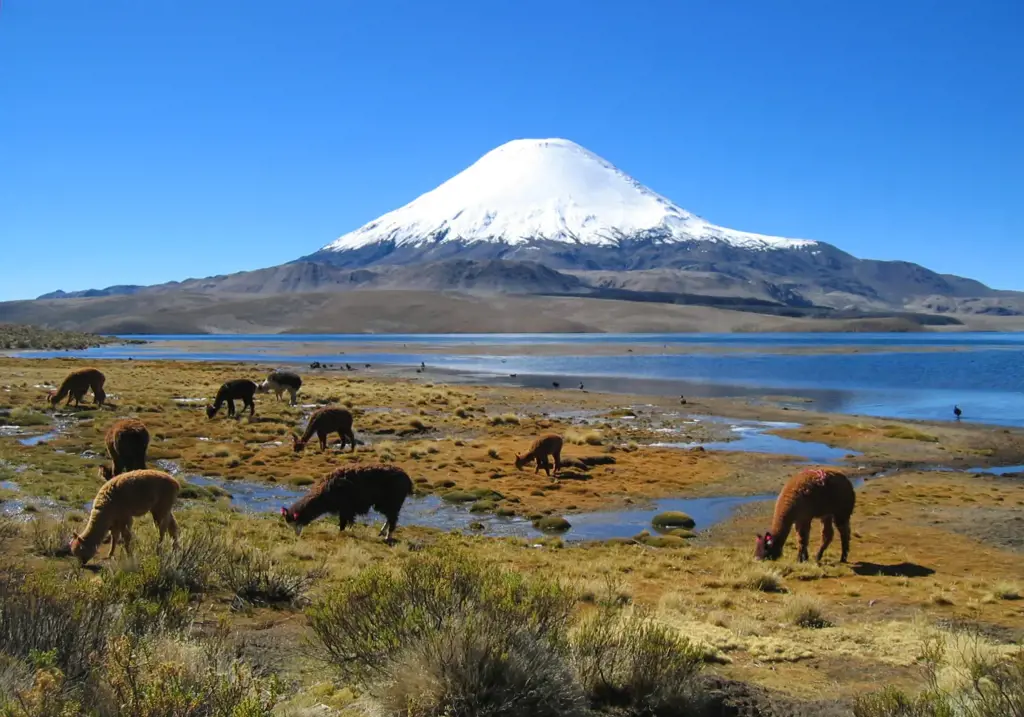
| Characteristic | Description |
|---|---|
| Name | Lauca National Park |
| Type | National park in Chile |
| Website | Go to website |
| Rating / Review count | 4.6 / 1,393 |
| Address | Putre, Arica y Parinacota, Chile |
| Phone | +56 58 258 5704 |
One of the highlights of Lauca National Park is the awe-inspiring Parinacota Volcano, standing tall at over 6,300 meters above sea level. It is not only Chile's highest active volcano but it is also one of the most snow-covered in the world. This impressive mountain offers not only stunning views but also an array of outdoor activities such as hiking, trekking, or even skiing for the more experienced adventurers.
In addition, visitors can also explore the mesmerizing Chungará Lake, located at an altitude of 4,517 meters. This high-altitude lake is famous for its clear and vibrant turquoise waters, displaying stunning reflections of the surrounding mountains, including the Parinacota and Pomerape volcanoes. There are also various bird species that nestle in this area, making it the perfect spot for bird-watching enthusiasts.
Apart from its natural beauty, Lauca National Park is also home to numerous traditional Andean communities with unique cultures and histories. Travelers can get a glimpse of the local way of life by interacting with the people living in these isolated communities or by participating in traditional dances, which are often performed during local festivals.
Visitors to Lauca National Park can access various walking trails and treks that accommodate different levels of fitness and experience. However, getting to the park itself may be challenging, as it is located in a remote region of Chile's expansive altiplano and is accessible mainly via unpaved roads. Nevertheless, the journey to this remarkable and unique location is worth making to experience the natural beauty and cultural diversity of Lauca National Park.
In conclusion, Lauca National Park is an absolute must-visit for anyone traveling to the north of Chile. From its towering Andean peaks to its expansive lakes, this protected area offers unforgettable experiences and insights into one of the world's most striking and culturally-rich regions. It represents an authentic pathway to explore Chile's natural and cultural diversity that will last in visitor's memories forever.
12 Fun Things to Do in Studio City for All Ages!
You may want to see also

Nevado Tres Cruces National Park
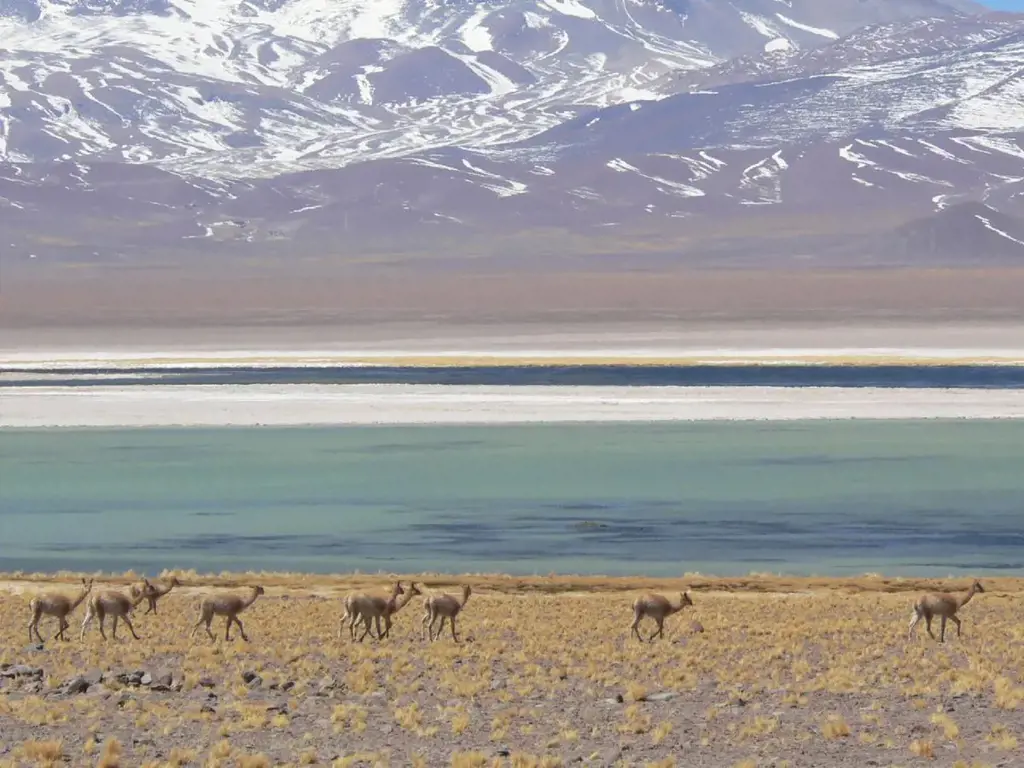
| Characteristic | Description |
|---|---|
| Name | Nevado Tres Cruces National Park |
| Type | National park in Chile |
| Website | Go to website |
| Rating / Review count | 4.7 / 207 |
| Address | Copiapo, Atacama, Chile |
| Phone | +56 52 221 3404 |
The park is located in the region of Atacama, around 90 km east of Copiapó. It is named after the Tres Cruces mountains, which have three peaks that rise up to almost 6,000 meters above sea level.
The park is also home to Laguna Santa Rosa, which is a stunning lake situated at an altitude of 3,500 meters above sea level. It is known for its intense turquoise color and is home to various indigenous bird species including flamingos.
One of the key features of the park is its desertscape, which is characterized by its diverse flora and fauna. Visitors can explore the saltpans, which are home to many unique species of flora and fauna that have adapted to survive in extreme conditions.
The park is open to visitors all year round, but the best time to visit is from October to December when the landscapes are awash with colors.
In conclusion, Nevado Tres Cruces National Park is a must-visit destination in North Chile for anyone who is interested in nature, adventure, and outdoor recreation. It epitomizes the unique landscapes of North Chile and offers an unforgettable experience that will leave visitors mesmerized.
13 Fun Things to Do in Yuma, Arizona
You may want to see also

Punta de Choros and Isla Damas
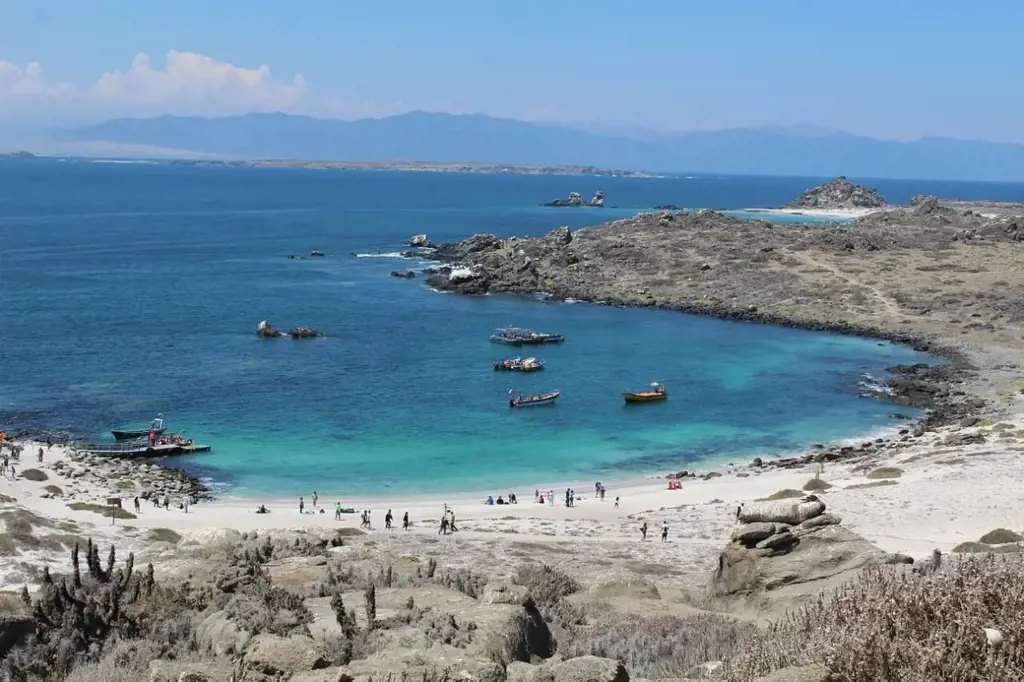
| Characteristic | Description |
|---|---|
| Name | Punta de Choros |
| Type | Village in Chile |
North Chile is a stunning region with serene landscapes and plenty of adventure opportunities. If you're a nature lover and on the hunt for a captivating wildlife experience, head to Punta de Choros and Isla Damas.
Located off the coast of La Serena, Punta de Choros is a charming fishing village that offers a peaceful escape from the hustle and bustle of city life. From here, boat trips to nearby Isla Damas take you to a paradise of islands, rocks and hidden beaches that are rich in marine life.
A visit to Isla Damas is all about experiencing the incredible marine wildlife that inhabits these waters. This protected area is home to a diverse range of marine creatures, including sea lions, dolphins, penguins, flamingos, and a variety of fish species.
One of the most popular activities to do on Isla Damas is to join a boat tour and go on a wildlife-watching expedition. These cruises typically take you around the island's coastline, where you can spot an array of marine life. With the tour guide's help, you can even swim with sea lions and observe them in their natural habitat.
Alternatively, you can explore the island on foot by going on a guided hike. Trekking trails will take you through scenic landscapes boasting stunning views of the Pacific Ocean. Keep an eye out for the island's unique flora and fauna, including the guanaco, a majestic South American mammal.
It's important to note that Isla Damas is a protected area, which means visitors need a permit to access it. These permits are issued by the local municipality and tours are the best way to obtain them.
In conclusion, Punta de Choros and Isla Damas are two of Chile's hidden gems, where you can immerse yourself in nature and encounter awe-inspiring marine wildlife. Don't miss out on the opportunity to explore this incredible destination during your visit to North Chile.
11 Romantic Things to Do in Birmingham AL for Couples
You may want to see also

Cerro Paranal Observatory
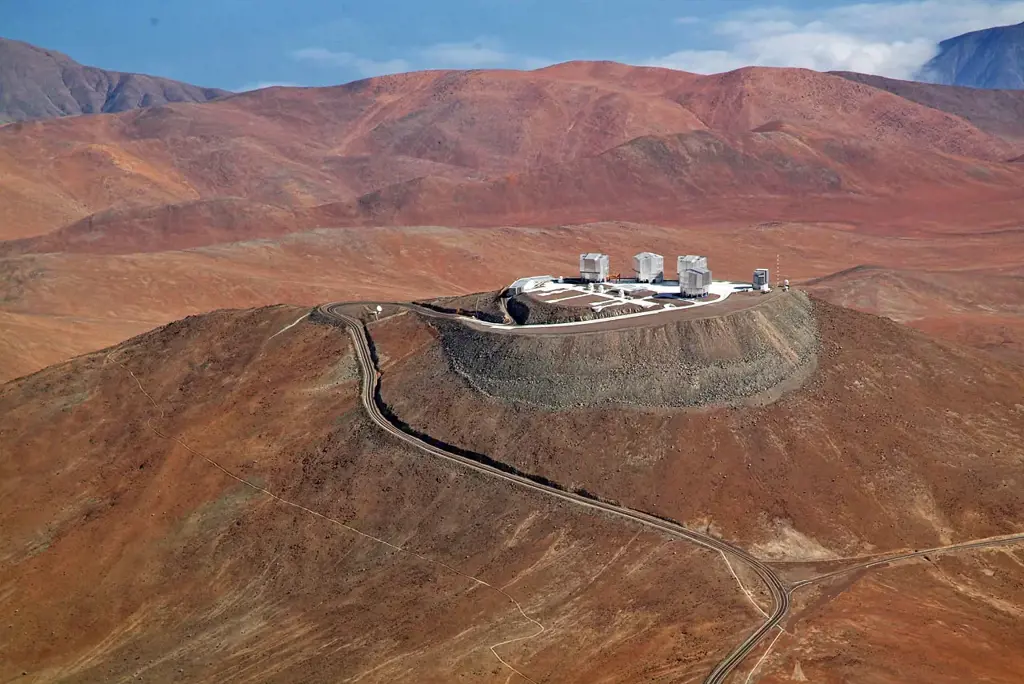
The observatory comprises four telescopes, each with an aperture of 8.2 meters. These telescopes are known as the Very Large Telescope (VLT) and are among the most advanced optical telescopes in the world. The VLTs are equipped with a range of instruments that allow astronomers to study the stars and galaxies in unprecedented detail.
The location of the observatory, high up in the Andes Mountains and far from light pollution, provides astronomers with excellent observing conditions. The air is thin and dry, which reduces distortion from the Earth's atmosphere and allows for clearer observations. Furthermore, the Atacama Desert is one of the driest places on Earth, which reduces the amount of water vapor in the air and further improves the clarity of observations.
The VLTs are used for a wide range of astronomical research, including the study of exoplanets, the search for dark matter, and the study of the early universe. The telescopes have provided astronomers with detailed images of galaxies, stars, and planetary systems, and have led to numerous discoveries in astronomy and astrophysics.
Overall, Cerro Paranal Observatory is a vital facility for astronomical research. Its location in the Atacama Desert, combined with its state-of-the-art telescopes and instruments, make it one of the premier observatories in the world.
13 Amazing Things to Do in Miami for Your Birthday
You may want to see also

Pica Oasis
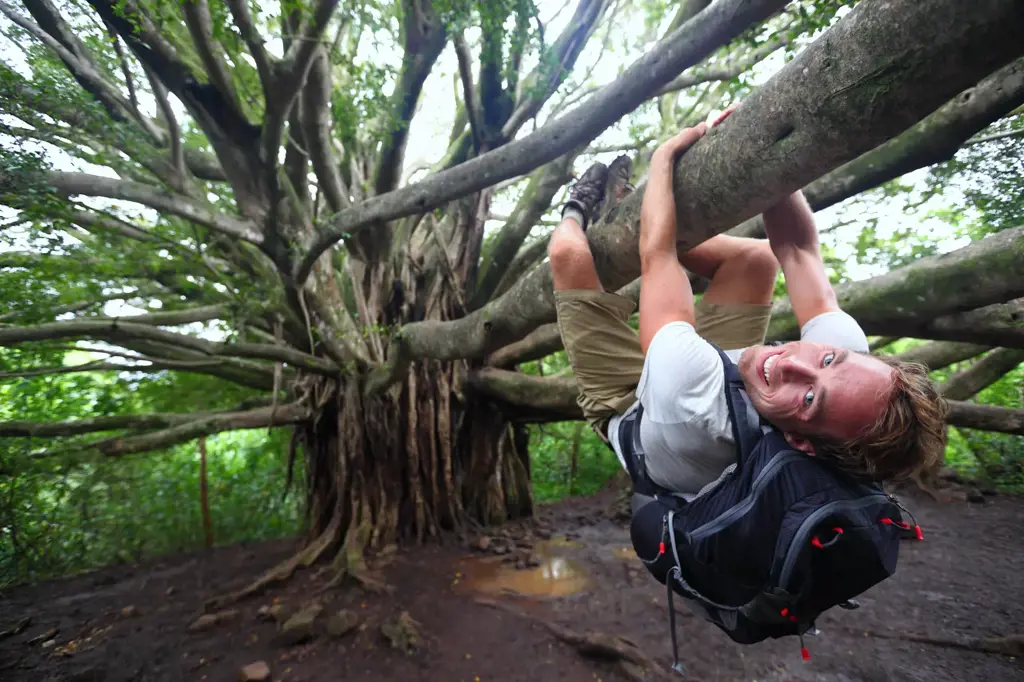
Located in the heart of north Chile lies the picturesque oasis town of Pica. This hidden gem boasts a unique blend of desert landscape and lush greenery, as well as a rich history and culture that is waiting to be explored.
One of the main attractions of Pica is its natural thermal pools. These hot springs are reputed to have healing properties and draw visitors from all over Chile and neighboring South American countries. There are a variety of pools to choose from, ranging from luxurious spa resorts to more rustic pools nestled in the surrounding hills.
For those who are interested in history and culture, Pica has much to offer. The town itself is a colonial settlement, founded in the 16th century, and has well-preserved architecture and artifacts from this time period. Visitors can also explore nearby pre-Columbian ruins, which offer a glimpse into the ancient cultures that once inhabited the area.
Foodies will also find much to enjoy in Pica. The town is famous for its traditional cuisine, including empanadas, humitas (a steamed corn dish), and of course, the local drink of choice, Pica limón. This refreshing beverage is made from the locally grown limón de Pica, a type of lime that is unique to the area.
Adventure seekers can also find plenty to do in the surrounding area. The nearby National Reserve of Pampa del Tamarugal offers hiking opportunities and breathtaking views of the surrounding Andes Mountains. Visitors can also take part in various outdoor activities such as horseback riding, zip-lining, and sandboarding on the dunes of nearby Cerro Unitas.
If you're looking to get off the beaten track and explore a lesser-known part of Chile, Pica should definitely be on your list. Its unique blend of natural beauty, history, culture, and adventure make it a destination worth discovering.
14 Must-Do Activities in Schroon Lake
You may want to see also

Chungará Lake
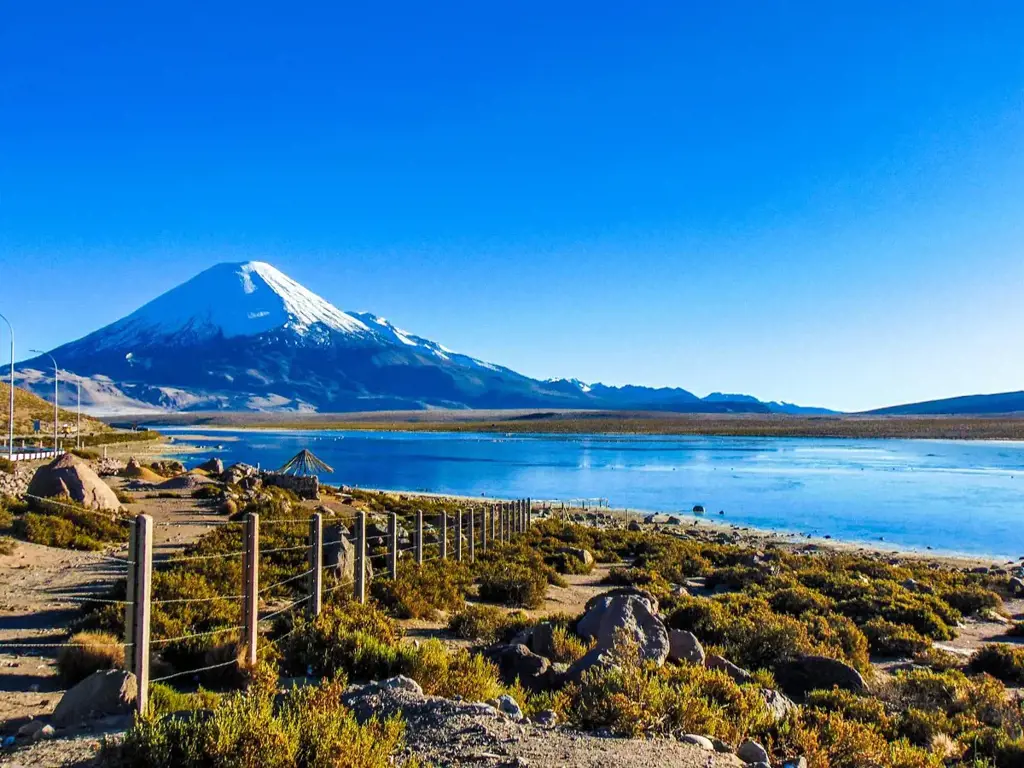
| Characteristic | Description |
|---|---|
| Name | Chungará Lake |
| Type | Lake in Chile |
| Rating / Review count | 4.8 / 204 |
If you are visiting north Chile, then a trip to Chungará Lake is a must. This breathtaking lake is situated at an elevation of 4,517 meters above sea level, and it is regarded as one of the highest lakes in the world. It is located in the Lauca National Park near the border of Chile and Bolivia. The surrounding landscape is awe-inspiring, with the snow-capped Lauca and Payachata mountain ranges surrounding the lake.
The lake is surrounded by a vast wetland area that is home to various bird species such as the Chilean flamingo, Andean gull, and puna ibis. It is a designated Ramsar site, which means it is recognized by the International Union for Conservation of Nature and is protected by the Chilean government.
Apart from the stunning natural beauty, Chungará Lake is also steeped in history. There are various pre-Columbian ruins in the area of cultures that lived in the region before the Inca Empire. These cultures utilized the lake area for agriculture, fishing, and religious ceremonies.
There are various tourist facilities available near the lake, making it easier for visitors to access and enjoy this beautiful location. You can go on a guided tour to learn more about the history and culture of the area or take a leisurely walk around the lake’s perimeter. You can also rent a boat and explore the lake’s clear waters, soak in the natural hot springs, or go trekking on the various trails that lead to the mountain ranges around the lake.
Visiting Chungará Lake is a unique experience that will leave you awestruck by its natural beauty and rich history. It is a perfect destination for nature enthusiasts and adventure seekers alike. If you are planning a trip to North Chile, make sure you add Chungará Lake to your itinerary.
10 Fun Indoor Activities to Enjoy in Pittsburgh When it Rains
You may want to see also

San Pedro de Atacama Archaeological Museum
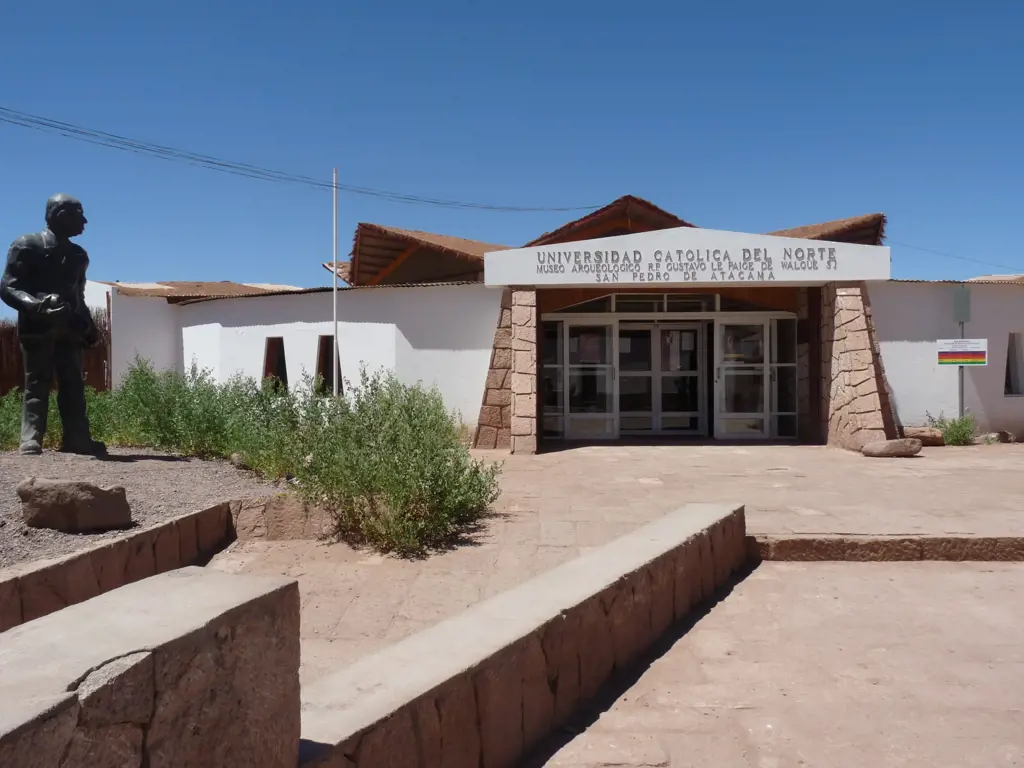
| Characteristic | Description |
|---|---|
| Name | Museo R. P. Gustavo Le Paige, zona de recinto transitorio |
| Type | Museum in San Pedro de Atacama, Chile |
| Rating / Review count | 4 / 324 |
| Address | Tebenquinche entre Ave. Del Inca y, Av. Pedro de Valdivia, 1410000 Antofagasta, San Pedro de Atacama, Antofagasta, Chile |
| Phone | +56 9 4005 8263 |
| Hours | Wednesday - opens at 9 AM and closes at 6 PM Thursday - opens at 9 AM and closes at 6 PM Friday - opens at 9 AM and closes at 6 PM Saturday - Closed Sunday_naval_glories_day - Closed Monday - opens at 9 AM and closes at 6 PM Tuesday - opens at 9 AM and closes at 6 PM |
The museum contains a vast collection of artifacts and exhibits that date back to the pre-Columbian era, including pottery, textiles, jewelry, and tools used by indigenous communities. These items offer an insight into the daily lives of the indigenous people who inhabited the Atacama Desert more than 10,000 years ago.
One of the most prominent exhibits at the San Pedro de Atacama Archaeological Museum is the mummified human remains of the Chinchorro people. The Chinchorro people were the first to mummify their dead, and their embalming techniques have been studied and replicated by modern-day scientists.
Apart from the mummified remains, the museum also features a range of artworks from the Tiawanaku, Inca, and Spanish colonial periods. The exhibits display how these different cultures impacted the development of the Atacama region and how the indigenous people managed to maintain their traditions despite colonization attempts.
The museum also houses a replica of a colonial-style home, the so-called "Casa Colonial." This exhibit allows visitors to experience what homes were like during that period in history. It gives a glimpse into how the Spanish settlers lived and how society was structured in this part of the world.
Being situated in the heart of San Pedro de Atacama, the museum is a perfect starting point to explore the surrounding area. San Pedro de Atacama is a popular tourist destination, as it houses several other archaeological and cultural sites.
The town is also surrounded by natural wonders, such as the Licancabur Volcano, the Salar de Atacama Salt Flat, and the Valle de la Luna, among others. Thus, visitors can explore the ancient history and natural beauty of the Atacama Desert in one go.
In conclusion, the San Pedro de Atacama Archaeological Museum is a must-visit site for anyone interested in the history and culture of North Chile. It offers a rare opportunity to explore the ancient past of the Atacama Desert and witness the rich cultural heritage of the indigenous people who thrived in the region.
13 Fun Things to Do in Herkimer, NY
You may want to see also

Humberstone and Santa Laura Saltpeter Works
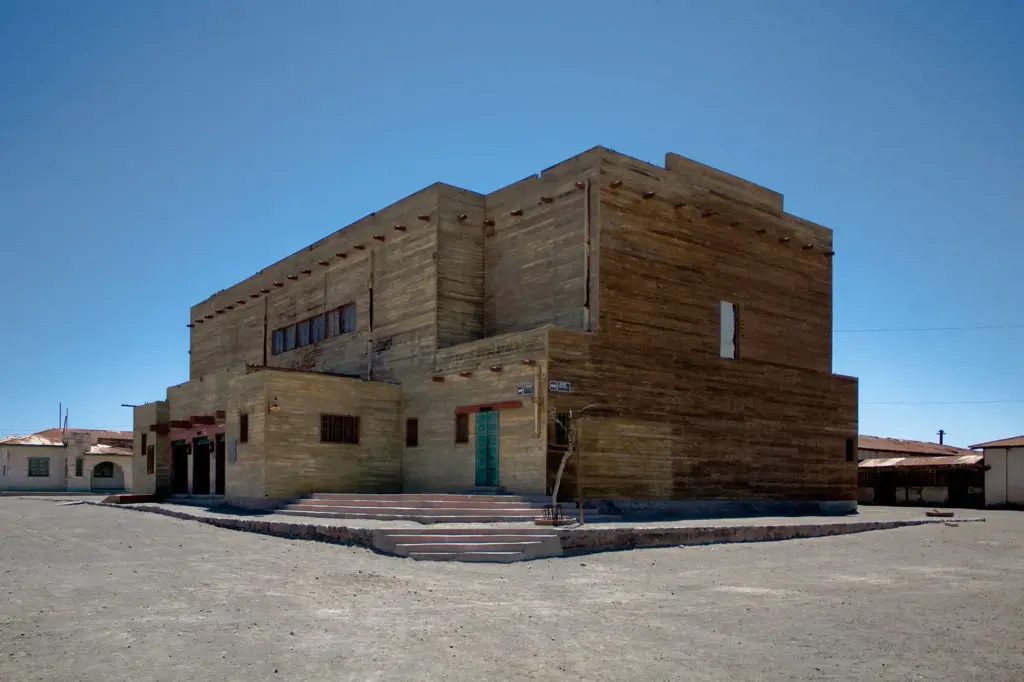
| Characteristic | Description |
|---|---|
| Name | Humberstone and Santa Laura Saltpeter Works |
| Type | Historical place in Humberstone, Chile |
| Website | Go to website |
| Rating / Review count | 4.8 / 662 |
| Address | Ruta 16 km 47, Pozo Almonte, Tarapacá, Chile |
| Phone | +56 57 276 0626 |
| Hours | Wednesday - opens at 9 AM and closes at 6 PM Thursday - opens at 9 AM and closes at 6 PM Friday - opens at 9 AM and closes at 6 PM Saturday - opens at 9 AM and closes at 6 PM Sunday_naval_glories_day - opens at 9 AM and closes at 6 PM Monday - opens at 9 AM and closes at 6 PM Tuesday - opens at 9 AM and closes at 6 PM |
Located in northern Chile, the Humberstone and Santa Laura Saltpeter Works are two former industrial sites that have gained recognition for their historical and cultural significance. The two saltpeter works are located in the Atacama Desert, one of the driest places on earth, and were once instrumental in producing Chile's major export: saltpeter, also known as sodium nitrate.
Production at these works began in the late 19th century when the Chilean government granted concessions for the exploitation of saltpeter, attracting numerous foreign investors to the region. The harsh living conditions of the workers, including low wages and long working hours, led to the emergence of labor movements, which later played a vital role in Chilean history.
Despite its importance in the country's history, the Humberstone and Santa Laura Saltpeter Works were eventually abandoned due to declining production and the rise of synthetic fertilizers. In 2005, both sites were declared UNESCO World Heritage Sites, bringing international recognition and attention to these remarkable structures.
Visitors to the Humberstone and Santa Laura Saltpeter Works can explore the preserved remains of buildings that were once used to house workers and machinery, including barracks, hospitals, schools, and even a theater. The intricate architecture of these structures reflects the influence of the European investors who commissioned their design.
Today, these two saltpeter works continue to be a source of fascination and inspiration for historians, students, and travelers alike, representing a complex and nuanced history of cultural exchange, innovation, and exploitation. Visiting the Humberstone and Santa Laura Saltpeter Works not only provides a glimpse into the past but also underscores the significance of preserving historical structures and the stories they can tell.
13 Fun Things to Do in Boston for Halloween
You may want to see also

La Portada Natural Monument
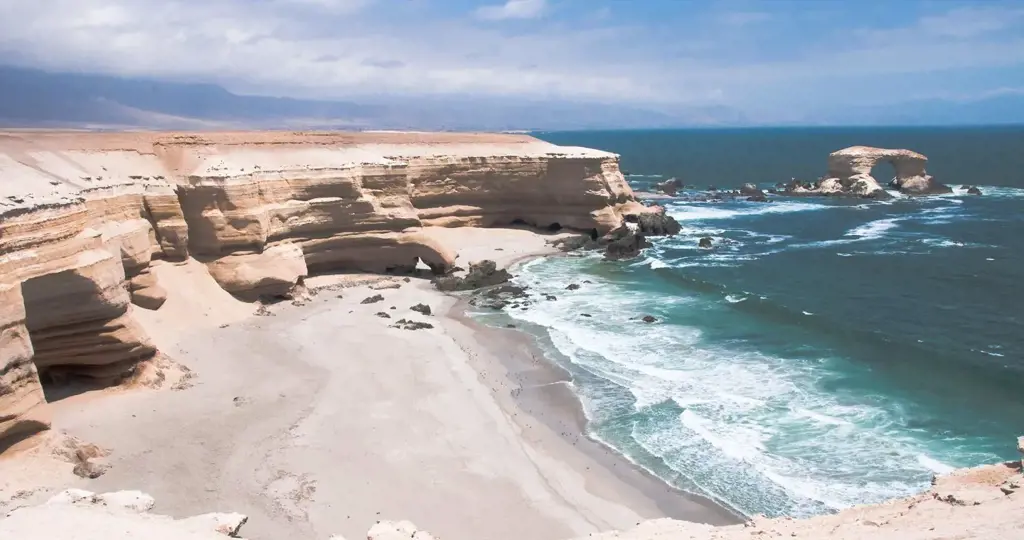
| Characteristic | Description |
|---|---|
| Name | La Portada |
| Type | Natural arch in Chile |
| Website | Go to website |
| Rating / Review count | 4.6 / 6,019 |
| Address | Antofagasta, Chile |
Located in the northern coast of Chile, in the region of Antofagasta, there is a peculiar geological formation known as La Portada Natural Monument. This majestic natural rock arch that rises from the vast Pacific Ocean is one of the iconic landmarks of Chile, attracting visitors from all corners of the world.
La Portada, which means "The Gateway" in Spanish, is a natural arch that stands at a height of 43 meters (141 feet) and spans over 70 meters (230 feet). The arch has been sculpted over time by the constant action of the sea and the wind, creating a unique and stunning landscape that can only be found in this part of Chile.
The area around La Portada Natural Monument is also home to a diverse range of marine wildlife, making it an ideal destination for nature lovers and those interested in exploring Chile's unique ecosystem. Dolphins, sea lions, and pelicans are some of the marine creatures that can be spotted along the coast.
For those who like hiking and outdoor activities, there are several trails and paths that lead to La Portada, offering spectacular views of the arch and the rugged coastline. This is a great opportunity to explore the region's arid desert landscape and learn about the local flora and fauna.
Visitors can also enjoy the crystal clear waters of the Pacific Ocean, sunbathing on the sandy beaches nearby, or trying some of the many water sports available in the area, such as surfing, paddleboarding, and kayaking.
Besides its stunning natural beauty, La Portada Natural Monument also has an important cultural and historical significance. The area was once inhabited by the Chinchorro people, a pre-Columbian civilization that left behind fascinating artifacts and mummies, some of which are exhibited in nearby museums.
In conclusion, La Portada Natural Monument is an exceptional destination for nature lovers, outdoor enthusiasts, and those interested in history and culture. This hidden gem of North Chile is definitely worth a visit, offering an unforgettable travel experience in one of the most stunning natural settings in the world.
13 Fun Things to Do in Lakewood, Ohio
You may want to see also

Vicuña Astronomical Observatory
North Chile is renowned for its dark skies, making it a popular destination for stargazing enthusiasts. One of the most impressive observatories in the area is the Vicuña Astronomical Observatory.
Located just outside the town of Vicuña, the observatory is perched at an altitude of 1300 meters on a hill overlooking the Elqui Valley. It was established in 1968 by the University of Chile's Institute of Astronomy, making it one of the oldest observatories in South America.
The observatory's main telescope is a 60cm reflector, which is used primarily for research and education. The telescope is equipped with modern instruments and cameras, allowing researchers to study a variety of objects, including planets, stars, and galaxies.
Visitors to the observatory can take advantage of several programs, including guided tours, daytime visits, and night-time stargazing sessions. Programmes include astronomy workshops, private tours, and observing sessions for people of all ages and levels of expertise. Visitors can learn about the observatory's history, see the main telescope and smaller ones, and enjoy spectacular views of the surrounding landscape.
One of the most popular events at the observatory is the "Stars and Wine" program, which includes a guided tour of the facility followed by a wine tasting under the stars. The program combines a love of astronomy with the culinary delights of the region, as the Elqui Valley is well known for its vineyards and wines.
Overall, the Vicuña Astronomical Observatory is a fabulous destination for those who want to explore the marvels of the cosmos. Its location amidst the stunning Chilean landscape, the state-of-the-art equipment, and the knowledgeable staff make it an unforgettable experience that visitors will treasure for years to come.
14 Fun Things to Do in Castroville, TX
You may want to see also

Elqui Valley and Pisco Route
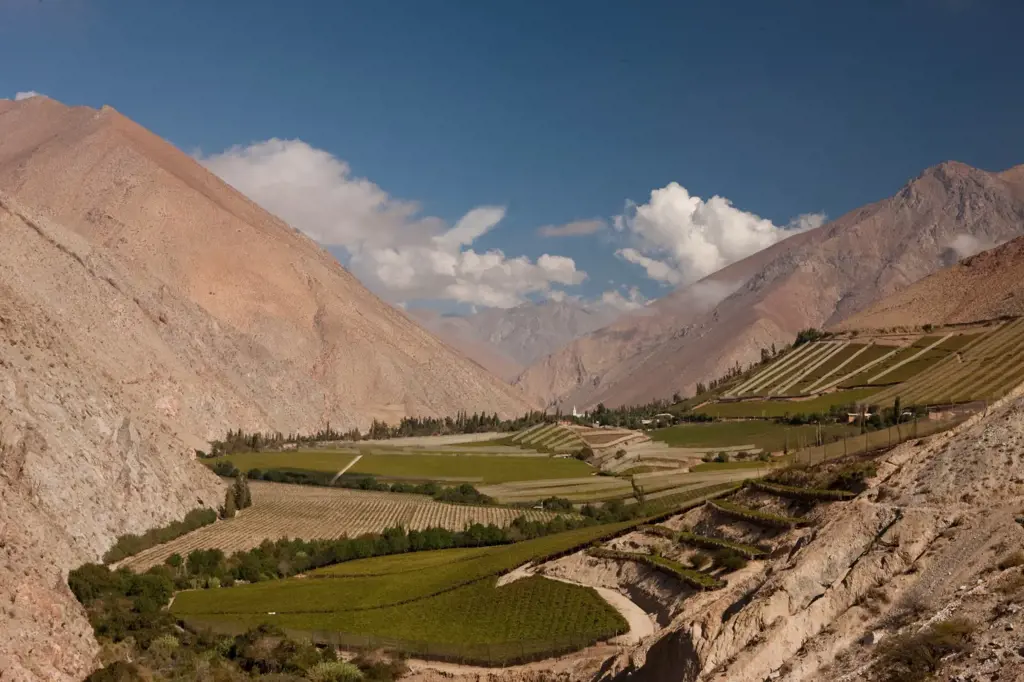
North Chile is known for its striking natural beauty, and visitors looking to immerse themselves in this rugged landscape will find no better place than the Elqui Valley and Pisco Route. Located in the Coquimbo Region, this area boasts a unique combination of desert terrain, vineyards, and charming small towns, making it a must-visit for any traveler headed to northern Chile.
The Elqui Valley is a stunning expanse of dry desert landscaped dotted with green vineyards and punctuated with clear, blue skies. It is home to a host of small towns, each with their own unique flavor and character. Vicuña, the largest of these towns, is known for its picturesque main square and historic church, and it is the birthplace of Gabriela Mistral, the first Latin American woman to receive the Nobel Prize in Literature. Pisco Elqui, another notable town in the area, is the heart of Chilean pisco production, and visitors can tour local distilleries to learn about the region's most famous export.
In addition to its small towns, the Elqui Valley is also famous for its stunning night sky, which ranks among the clearest and most vivid in the world. Visitors can take nighttime stargazing tours to marvel at the constellations and planets visible from the region.
Another highlight of the Elqui Valley and Pisco Route is the opportunity to participate in local gastronomy. In addition to pisco, the region is known for its delicious local cuisine. Visitors can sample a range of traditional dishes, including the Chilean favorite, empanadas, filled with a variety of savory or sweet fillings. The area is also celebrated for its fresh produce, including grapes, olives, and avocados, which are used in a variety of dishes and can be purchased from local markets.
Overall, the Elqui Valley and Pisco Route offer visitors a slice of the true Chilean experience, showcasing the rugged beauty of the region, the warmth of its people, and the rich history and culture that define this unique destination. Whether you're interested in stargazing, wine tasting, or exploring historic sites, this area offers something for everyone, so be sure to include it on your itinerary for your next trip to northern Chile.
12 Free Things to Do in Fort Collins That You Can't Miss
You may want to see also
Frequently asked questions
San Pedro de Atacama is known for its stunning landscapes and natural wonders. Popular activities include visiting the Valle de la Luna, exploring the geysers and hot springs, hiking in the Atacama Desert, and stargazing in one of the clearest skies in the world.
Yes, it is possible to visit the Andean volcanoes in Northern Chile. The most popular ones to visit are Lascar and Licancabur, which can be accessed by guided tours that depart from San Pedro de Atacama.
Absolutely! Northern Chile has some of the largest sand dunes in the world and offers plenty of opportunities for sandboarding. One popular spot is the Valle de la Muerte (Death Valley) near San Pedro de Atacama.
One of the best places to try Chilean cuisine is in the coastal town of Arica, which is known for its delicious seafood. Another popular place to try traditional dishes like empanadas and pastel de choclo is in San Pedro de Atacama.
Yes, Lauca National Park is definitely worth a visit. Located in the high Andes, it offers breathtaking scenery including snow-capped peaks, emerald lakes, and herds of llamas and vicuñas. Visitors can go hiking or take guided tours to see some of the park's most impressive landmarks, like the Chungara Lake or the Parinacota and Pomerape volcanoes.








2 Comments
Samir Gallagher
Findlay Barrera